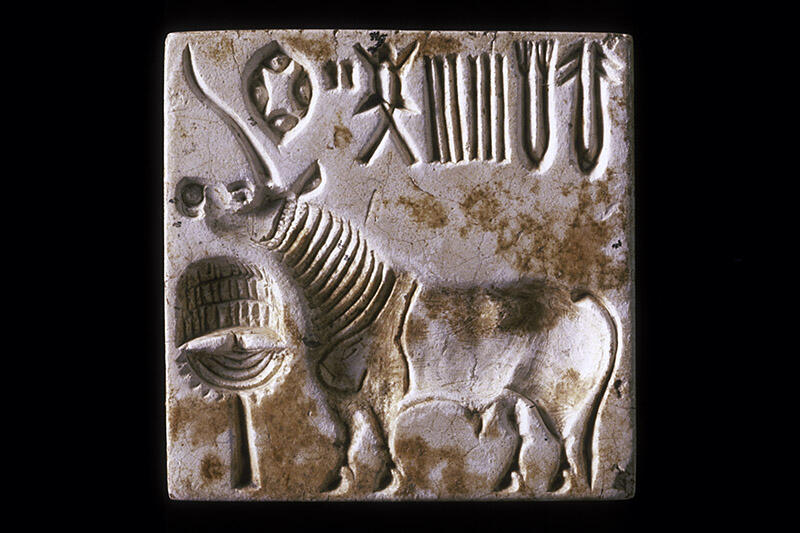This comprehensive look at the development of the Indus script makes a clear and cogent case that its origins likely can be traced to the pre and post-firing graffiti marks found on pottery throughout the region. Ssigns that appear in these marks that later appear in the script, particularly the most common terminal sign. This "Mahadevan sign 342", the first sign on the right in the unicorn seal above (which when impressed would have been the last sign reading right to left) is possibly shown in an earlier post-firing form on the Kot Dijian period fragment in the second image. Dr. Kenoyer marshals examples from a wide variety of sites, like Kalibangan and Balakot, as well as from different periods at Harappa, to make a compelling case. "These single and sometimes multiple graphic symbols may represent a form of proto-writing similar to that seen in other world regions. These symbols continued to be used throughout the later periods in some sites, indicating that they reflect a parallel use of symbols that did not cease to function even with the introduction of a more complex writing system. The fact that they continued to function does not preclude the possibility that they also provided some form of stimulus to the development of specific signs that became incorporated into the writing system," he writes (p. 220).
Many pieces of the puzzle and the developments towards a written script that these incisions (and post-firing graffiti) took remain missing. This paper indicates where further research is needed - better collation and publishing of such marks from a variety of sites would be helpful, for example. The evidence that does exist is well illustrated in a series of figures; these seem to emphasize the vast area in which one of the world's earliest forms of writing was rooted, and the lengthy span of time it took to emerge and then develop. We can, however, still only surmise at the many functions of this writing within the constellation of Indus cultures. As Kenoyer writes: "The Indus script clearly functioned very differently than the writing systems of other early urban societies. From its use in the Early Indus Period and during the beginning of the Harappa Period it was dominated by short inscriptions on both pottery and seals. In later periods it was never used to write long inscriptions, and it does not appear to have been limited to only one community in that we see it associated with trade, ideology, personal identification and common materials (Parpola 1994; Kenoyer 2020). In contrast the earliest writing in Mesopotamia started out being used for basic accounting and was strongly associated with ideology and political power (Michalowski 1996; Cooper 2004; Damerow 2006); in Egypt the earliest writing was associated with royal burial offerings and continued to be used almost exclusively by elites for ritual and ideological purposes (Baines 2004), and that of ancient China was linked to recording communication with ancestors and was also strongly linked with elite culture and legitimation of both ideology and political authority (Keightley 1989; Boltz 2000; Haicheng 2015)" (p. 224).
Images
1. A steatite unicorn seal from Harappa with Indus script and dating to around 2450-2200 BCE.
2. Early Indus sherd (Kot Dijian phase) with signs.




